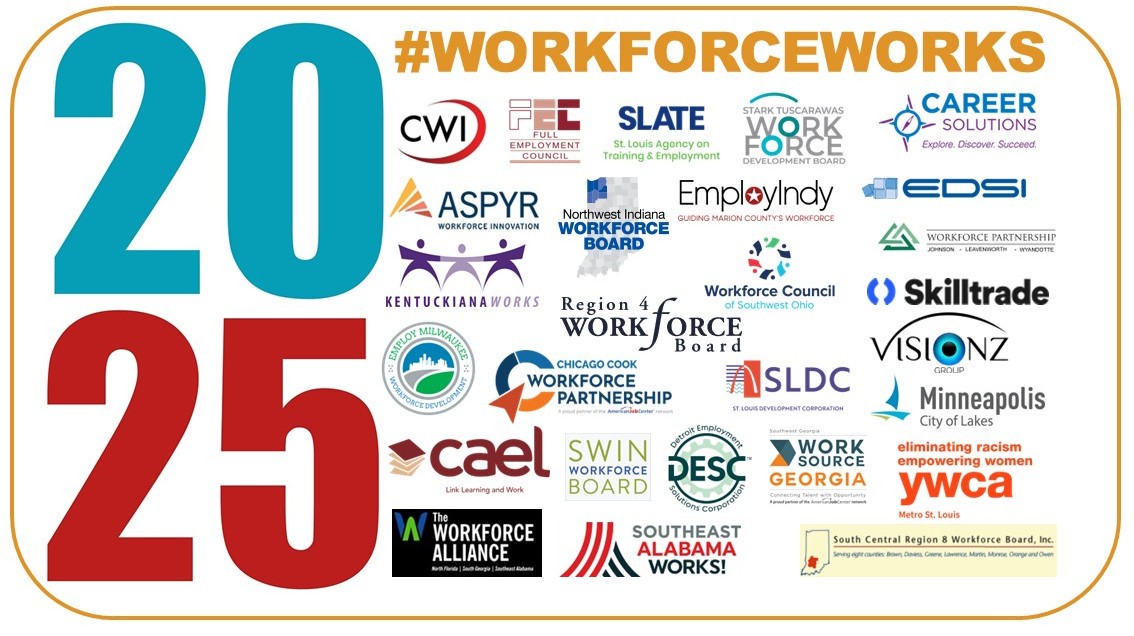,As we celbrate Workforce Development Month, it’s natural to showcase the wins: the new hires, the earned credentials, the stories of perseverance that make us proud. This evidence of success is notable, but it must be remembered in the context of how we got there. Behind each of those proud moments is a network of partners (employers, service providers, and training programs) and a shared commitment across these networks to walk alongside people as they navigate their own complex path toward success. We call it the ABCs of workforce development: Any Job (A), Better Job (B), and Career (C).
Workforce development, when done well, exists in a system of intentionally organized partners coordinating together to connect people to economic opportunity. At Midwest Urban Strategies, we strive to bring useful solutions to this dual customer approach. One of those solutions that MUS provides its members is a labor market information (LMI) tool, Lightcast, to assist with planning responsive programs and campaigns designed to solve for current, pressing workforce development needs. We encourage our members to validate this LMI with real time data from local employers to create an accurate picture of the labor market demands and opportunities in each local area. That information is combined to influence training investments, service partners, and resource allocations.
Local workforce development boards act as the architect and connector, bringing together American Job Center staff, community-based organizations, social service agencies, supportive service providers, employers, and other partners to create a seamless experience for the people they serve. It’s work that often happens out of sight, yet it is the foundation that makes visible success possible.
Through our work, we’ve identified interconnected elements that consistently help participants succeed:
- Career pathway development and training tied directly to labor market demand
- Employer engagement that works with employers by listening to their needs, co-designing training programs, and encouraging them to hire directly from local pipelines.
- Engagement and trust-building through outreach tailored to each population
- Comprehensive assessment and planning to create individualized career and life plans
- Barrier removal and supportive services addressing housing, transportation, childcare, mental health, and more
- Sustained follow-up to help participants advance and adapt over time
- Systems-level collaboration that keeps partners aligned and responsive
These elements reflect the approaches and services we’ve seen work across multiple MUS regional programs and communities. Across the MUS network, this collaborative framework consistently keeps industry at the center ensuring training is shaped by employer input, aligned with labor market needs, and connected to real job opportunities. By engaging businesses from the start, we can match skills development to demand, braid in resources to expand impact, and create results that serve both our customers: job seekers and employers.
Among those making an impact right now are the following MUS programs:
· Buckeye Works is about connecting Medicaid members with workforce boards to remove barriers and navigate career options in partnership with local employers
· Growth Opportunities is about supporting justice-involved youth with trauma-informed case management, legal aid, and access to employer-led training programs in high-demand industries
· Pathway Home 6 is about coordinating pre- and post-release services so adults returning to their communities have consistent case management, skills training designed with industry partners, and job placement in sectors that offer stability and upward mobility
In these programs, the populations and circumstances may differ, but the approach is the same: meeting people where they are, addressing immediate needs, and helping them move forward with stability, confidence, and purpose. This reflects MUS’s long-standing philosophy of building programs with communities, not for them, ensuring that solutions are rooted in local strengths and shaped by the voices of those they serve.
These MUS programs are built on a shared belief that career success happens when it’s paired with the right supports, combining personalized guidance, coordinated case management, and connections to community resources. When programs braid in community resources, they demonstrate the power of collaboration. This happens through strong partnerships with workforce boards, American Job Centers, community-based organizations, service providers, and employer/industry leaders who help define skill needs and commit to hiring from our pipelines. Together, these collaborations help participants overcome barriers, stay on track, and build lasting stability.
This month, let’s ALL commit to each other to do the work: share referrals faster, align data and follow-up across partners, and open one more training or hiring slot in every program. Small moves made together improve outcomes. When those moves are informed by employer insight, shaped around real industry needs, and backed by strong partnerships, the results are not only stronger, but built to last.





